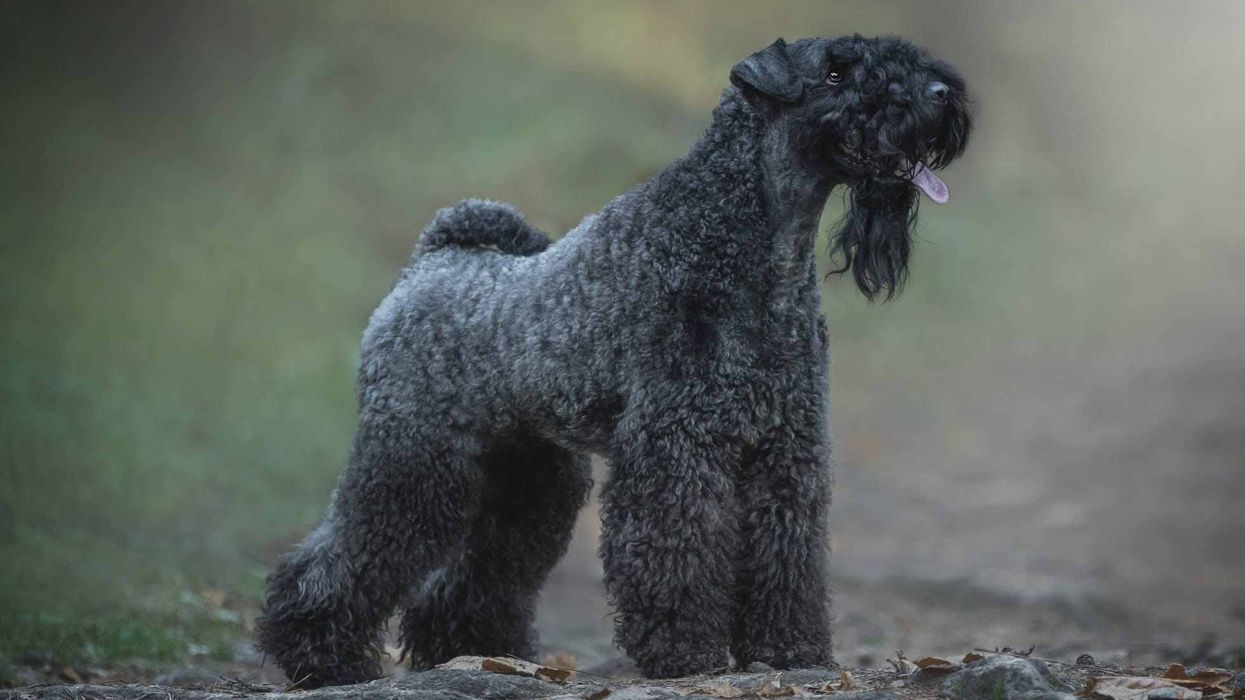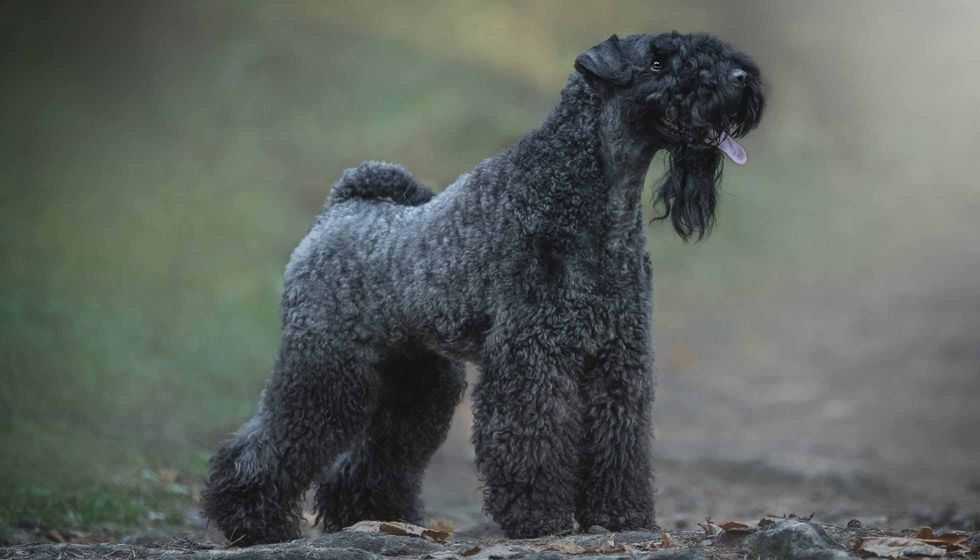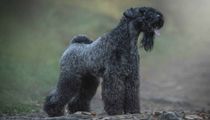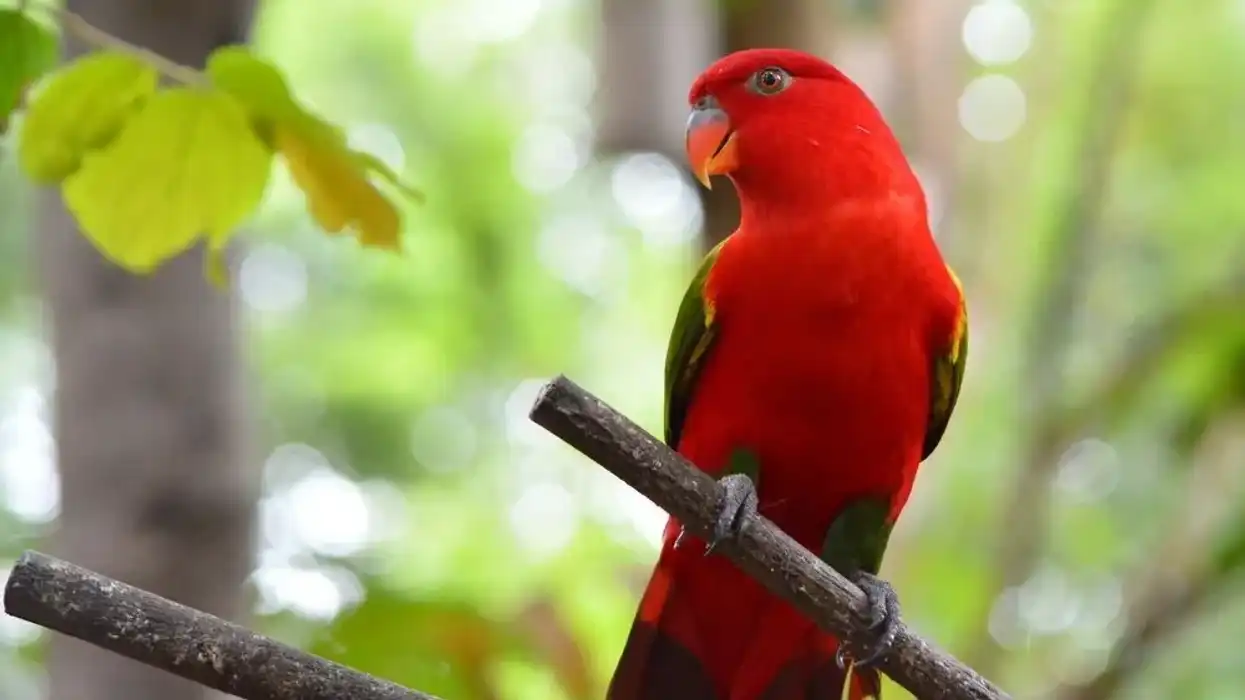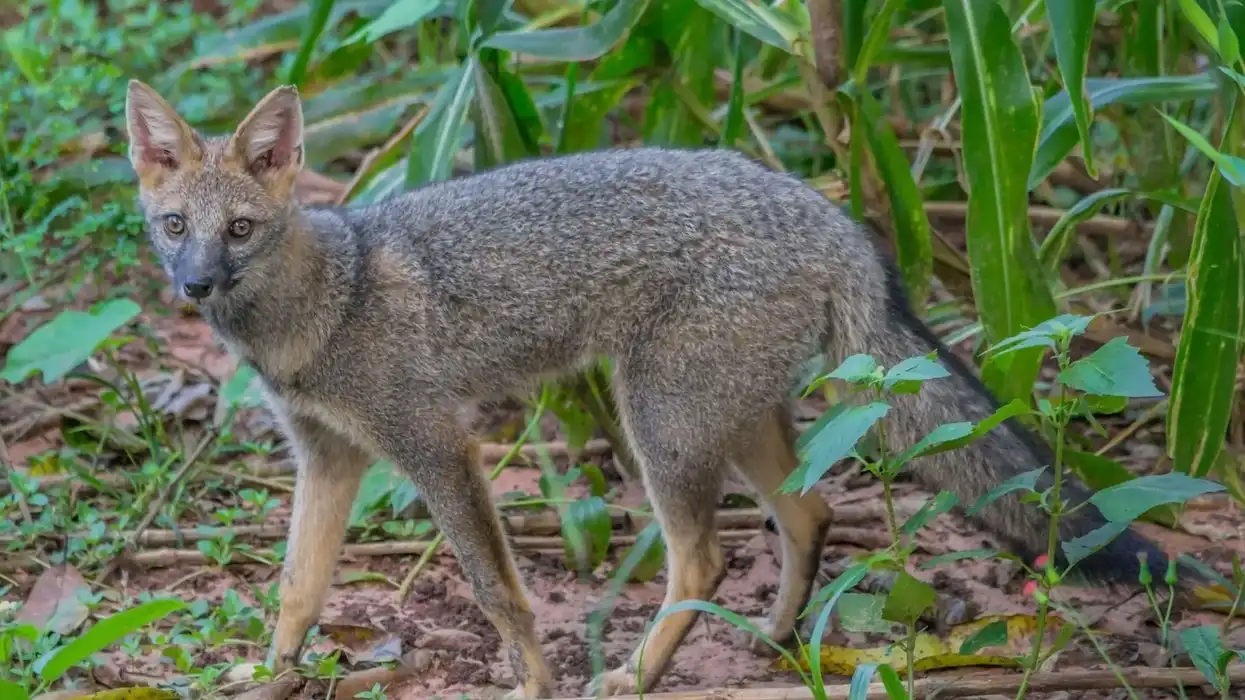Fun Kerry Blue Terrier Facts For Kids

Content
- What type of animal is a Kerry Blue Terrier?
- What class of animal does a Kerry Blue Terrier belong to?
- How many Kerry Blue Terriers are there in the world?
- Where does a Kerry Blue Terrier live?
- What is a Kerry Blue Terrier's habitat?
- Who do Kerry Blue Terriers live with?
- How long does a Kerry Blue Terrier live?
- How do they reproduce?
- What is their conservation status?
- What do Kerry Blue Terriers look like?
- How cute are they?
- How do they communicate?
- How big is a Kerry Blue Terrier?
- How fast can a Kerry Blue Terrier run?
- How much does a Kerry Blue Terrier weigh?
- What are their male and female names of the species?
- What would you call a baby Kerry Blue Terrier?
- What do they eat?
- Are they slobbery?
- Would they make a good pet?
- Did you know...
- Characteristics and Health Issues
- Getting Your Own Kerry Blue Terrier
Do you want to learn about a rather uncommon dog breed? A Kerry Blue Terrier is a type of dog from the very famous Terrier breed group.
It has a distinguished coat of blue and was first bred in Ireland in County Kerry. A Kerry Blue was originally bred to chase away small animals and help in herding activities.
As pets, this group is quite family-friendly and has an affectionate temperament. A Kerry Blue Terrier is a healthy breed but is still prone to health problems. They face genetic blood clotting disorders, the growth of cysts or tumors, and eye problems like cataracts, dry eyes, and entropion.
It is a medium-sized dog and it needs to keep its weight in check. It also needs regular training.
It can run and swim as a part of its exercise routine. To know more interesting facts about the Kerry Blue Terrier, keep on reading.
If you like Kerry Blue Terrier information and facts, then check out Jack Chi and rat terrier to read about more relatable animals.
Kerry Blue Terrier Interesting Facts
What type of animal is a Kerry Blue Terrier?
The Kerry Blue Terrier is a versatile dog breed. The first Kerry Blue Terrier was bred in 1820 in County Kerry, Ireland, and thus the name 'Kerry' Blue Terrier.
This breed mainly acts as a working dog and is often trained to hunt or herd. Kerry Blue Terrier is considered to be a quite unique breed and has distinguished characteristics.
What class of animal does a Kerry Blue Terrier belong to?
The Kerry Blue Terrier is a mammal belonging to the class of Mammalia and the genus Canis. It is not different from any other breed of dog and falls under the Canidae family. The scientific name of Kerry Blue Terrier is Canis lupus familiaris.
How many Kerry Blue Terriers are there in the world?
It is very difficult to keep track of dog breeds that are bred in captivity. The number of Kerry Blue Terriers in the world is not known.
Although this breed is relatively rare, its population is not as threatened as Skye Terrier, Dandie Dinmont Terrier, or Sealyham Terrier. The Kerry Blue Terrier is known to face some health issues like most other dog breeds but they are generally curable.
Where does a Kerry Blue Terrier live?
A Kerry Blue Terrier was possibly first bred in the 1820s in County Kerry, Ireland to be a working dog. This breed that was originally bred to be a working dog is highly trainable and has great herding instincts and is now found in homes all over the world.
A Kerry Blue Terrier can be trained to chase away animals and birds and even kill small rodents.
The Kerry Blue Terrier is found generally living in a house with its owner. A few dogs of this breed are often found living in dog shelters after getting abandoned.
What is a Kerry Blue Terrier's habitat?
Kerry Blue Terriers can survive in almost all kinds of weather so the temperature is not an issue for them. As they have high energy levels, they need to exercise on a daily basis.
Lack of exercise can affect their mood and health. Kerry Blue Terriers are fairly indoor dogs and living in an apartment should not be a problem for them.
An apartment with a small backyard would be perfect for this breed. A small backyard can provide them sufficient space to exercise, train, or play a fun game of fetch with their owners.
Who do Kerry Blue Terriers live with?
Kerry Blue Terriers are active family dog breeds that generally live with their owners. A Kerry Blue Terrier puppy is bred in captivity by breeders, so it is known to spend its early days with the breeders.
The breeders eventually sell the puppy off to its owners and the puppy settles down in its home. This breed is quite friendly with humans and even children but the same cannot be said about other pets.
Generally, they are not suitable for living with other dogs, cats, and other pets. Their aggressive side may be seen around other pets.
Even though Kerry Blues have some amusing characteristics and are recognized by the Irish Kennel Club as a reputed breed, they are often abandoned by their owners due to various reasons. Abandoned Kerry Blues live in an animal shelter or with their rescuers.
How long does a Kerry Blue Terrier live?
A Kerry Blue Terrier dog breed was bred to be a family-friendly working dog. Working dogs face certain health issues just like every other breed of dog. Even with all the health issues, a Kerry Blue Terrier is said to have an average lifespan of about 12-15 years.
How do they reproduce?
The reproduction process of this breed that is recognized by the Irish Kennel Club is not very different from other dog breeds. These pet dogs are bred in captivity under the supervision of the breeder.
A female Kerry Blue Terrier reaches the peak of its fertility around the age of four or five years. After this age, fertility keeps declining. The age of four or five years is the perfect time for the breeder to make the dog mate.
The male does not have a specific age for mating. A reputable breeder runs a few genetic tests to make sure the female is compatible to give birth to healthy puppies.
The reproductive cycle in dogs takes place in four phases or periods. Like every other dog breed, the female attracts the male dog during the first phase or Proestrus.
During the second phase or the Estrus period (heat period) which lasts for about 3-11 days, the female is receptive to the male. The female generally does not permit the male to mate any longer from the 14th day which marks the beginning of the third phase or the Diestrus period.
The last and final phase Anestrus takes place thereafter.
After a gestation period of about 60-64 days, the female will give birth to four to eight Kerry Blue Terrier puppies. It is extremely important for the breeder to not ignore the puppies or the mother during this time.
What is their conservation status?
The International Union for Conservation of Nature or IUCN Red List has not listed the conservation status of this breed yet. It is very difficult to keep track of dogs bred in captivity.
Even though Kerry Blues are considered to be an 'unfashionable' breed and are quite uncommon, there is no immediate threat to their population. In fact, their population is in a better state compared to other terriers like Skye Terrier, Dandie Dinmont Terrier, or Sealyham Terrier.
Kerry Blue Terrier Fun Facts
What do Kerry Blue Terriers look like?
Kerry Blue Terriers are medium-sized dogs blessed with an interesting appearance. They have a wavy-to-curly soft coat in shades of blue. This blue coat arrives much later as a puppy of this breed is born black.
This blue-gray coat is one of the most distinguishing features of a Kerry Blue Terrier. Apart from their coat, they have small dark eyes and a straight tail that is set high. The ears of a Kerry Blue are V-shaped and folded.
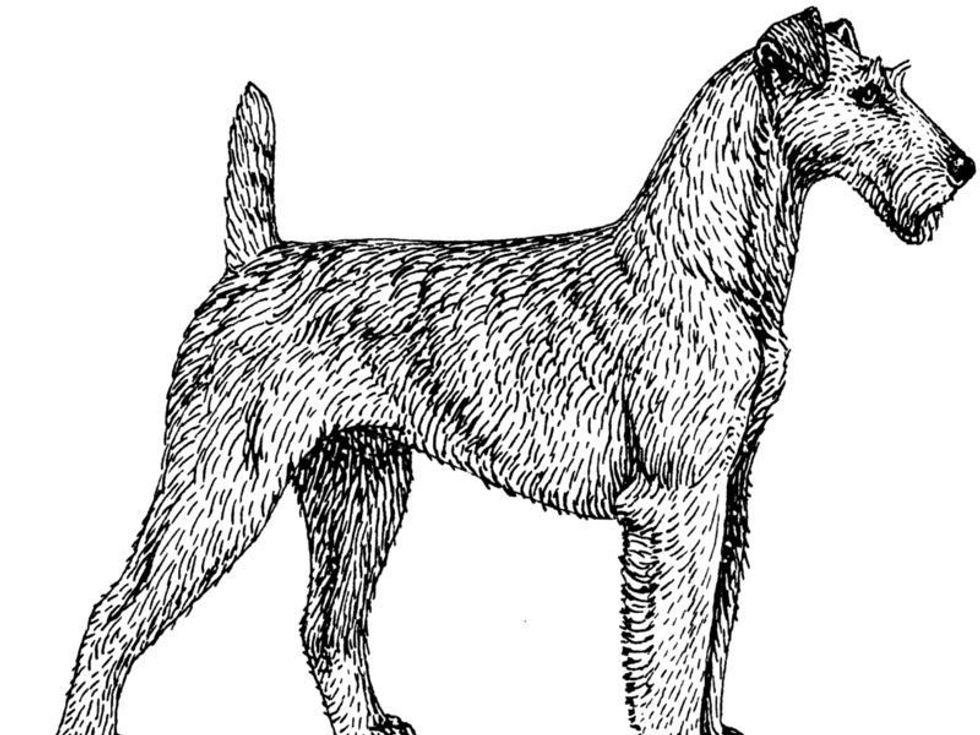
How cute are they?
A Kerry Blue is adorable like most other dog breeds. Their friendly and loyal nature multiplies their cuteness and makes it very easy to love them. The beautiful soft coat makes them even more adorable than other puppies.
How do they communicate?
Dogs generally communicate through vocalization and touch. A dog may bark, scream, howl, or sigh accordingly to convey messages to humans and other animals. Kerry Blues, recognized by the Irish Kennel Club, are known to use the same methods to communicate.
They do not bark as often as some pet dogs but may do so while chasing away small animals or showing their aggressive side to other pets. They mostly have a good temperament and do not shy away from showing affection to their human best friend.
They show affection in the most canine way possible, that is, licking faces. They wag their cute tails to show excitement. They are often found to playfully fight with their owners.
How big is a Kerry Blue Terrier?
Kerry Blue Terriers that hail from the County Kerry, are medium-sized dog breeds. There is a difference between the height of male and female dogs in this group.
The head-to-shoulder length of the males in this group is somewhere between 18–19.5 in (45.7–49.5 cm). The females of this group are comparatively shorter than the males and are about 17.5–19 in (44.5–48.3 cm) tall. An average Kerry Blue is almost twice the size of an average Norfolk Terrier with a height of about 9-10 in (22.9-25.4 cm).
How fast can a Kerry Blue Terrier run?
A Kerry Blue Terrier who is one of the recognized breeds of the Irish Kennel Club was originally bred to chase away small animals and help its owner in herding. Even though the exact speed of this breed of dog is not known, it can be assumed that they have a pretty moderate speed.
How much does a Kerry Blue Terrier weigh?
The weight of a male Kerry Blue Terrier differs from the females of this group. An average male Kerry Blue weighs somewhere between 33-40 lb (15-18.1 kg).
A female Kerry Blue is noticed to weigh a bit less than the male that is somewhere around 22–27 lb (10–12.2 kg). As Kerry Blue Terriers are generally working dogs, it is extremely important to keep their weight in check. Regular exercise and training can help a dog of this breed stay fit.
What are their male and female names of the species?
Just like every other breed of dog in this world, a female Kerry Blue Terrier is referred to as a bitch and a male Kerry Blue Terrier is called a dog. The height and weight of the male and female of this species differ.
What would you call a baby Kerry Blue Terrier?
A baby Kerry Blue Terrier is referred to as a Kerry Blue Terrier puppy. A Kerry Blue Terrier puppy has a different colored coat at birth which changes as the puppy grows.
What do they eat?
It is extremely important to not let a Kerry Blue Terrier become overweight. A healthy diet and proper exercise are the only ways to keep this breed in good shape.
Leaving food for them to eat throughout the day is not such a wise idea. They do not need more than two meals a day.
On the other hand, as they have a high energy level, the two meals should be two cups of high-quality dry food.
A minimum amount of protein intake is required to keep up their level of energy. An overweight dog of this breed tends to have eye problems so a lot of owners perform an eye test or a hands-on test to check if their pet is overweight.
Are they slobbery?
Drooling is not uncommon among dogs. However, a Kerry Blue Terrier is not an average drooler and does not need continuous cleaning up.
Would they make a good pet?
A Kerry Blue Terrier is known for having amazing working abilities. Like most dog breeds, it is loyal, affectionate, and makes a great companion.
Its friendly nature makes it very easy to get along with people including children. So, this breed has all the characteristics to make a great pet. However, Kerry Blue likes to be the sole pet in the house and does not really get along with other animals.
It needs proper training and grooming to be in good shape. It would not make a good pet to an inactive owner as both mental and physical exercise are needed.
Did you know...
The first dog to be registered under the Irish Kennel Club was a Kerry Blue Terrier. The IKC was founded after the success of the Dublin Irish Kerry Blue Terrier Club. The first show of this Blue Terrier Club was held outside official curfew hours in Dublin amid the conflicting scenario of Ireland's walk towards self-determination.
The Kerry Blue Terrier was possibly first seen in the United States in 1922 at the Westminster Kennel Club Dog Show.
Characteristics and Health Issues
Kerry Blue Terriers are working dogs who have high spirits and are extremely smart. They generally have an affectionate temperament and get along well with people. However, their temperament might get affected by other animals. They need constant training to maintain their good shape.
Kerry Blue Terriers are prone to certain health problems such as genetic blood clotting disorders, growth of cysts or tumors, and eye problems like cataracts, dry eyes, and entropion. On a positive note, most of these health problems are treatable.
Getting Your Own Kerry Blue Terrier
Adopting a Kerry Blue Terrier is a great idea. However, a few points should be kept in mind.
It is important to buy pups from reputable Kerry Blue Terrier breeders. A Kerry Blue Terrier price ranges from from $1000-1600 on average.
You can also adopt a dog of this breed from an animal shelter. This breed needs grooming quite often and the grooming process is expensive. Without proper training, it can face a lot of health issues.
You should not adopt a puppy of this breed if you won't be able to spend much time with it. It needs constant care and should not get bored as getting bored might lead to destructive behavior.
On the other hand, it makes a great companion and will do anything to protect its owners. After considering all these points, getting a Kerry Blue Terrier might be one of the best things that can happen to you.
Here at Kidadl, we have carefully created lots of interesting family-friendly animal facts for everyone to discover! Learn more about some other mammals including the Bedlington terrier, or Irish terrier.
You can even occupy yourself at home by drawing one on our cute puppy coloring pages.
We Want Your Photos!
More for You
Sources
https://www.akc.org/dog-breeds/kerry-blue-terrier/
https://www.petful.com/breeds/kerry-blue-terriers/
https://www.yourpurebredpuppy.com/reviews/kerryblueterriers.html
http://www.vetstreet.com/dogs/kerry-blue-terrier
https://www.rocadog.com/dog-blog-articles/kerry-blue-terrier-top-10-interesting-facts
https://puppytoob.com/kerry-blue-terrier/
See All
Bachelor of Arts specializing in Journalism and Mass Communication, Postgraduate Diploma in Sports Management

Moumita DuttaBachelor of Arts specializing in Journalism and Mass Communication, Postgraduate Diploma in Sports Management
A content writer and editor with a passion for sports, Moumita has honed her skills in producing compelling match reports and stories about sporting heroes. She holds a degree in Journalism and Mass Communication from the Indian Institute of Social Welfare and Business Management, Calcutta University, alongside a postgraduate diploma in Sports Management.
Bachelor of Business Management

Yashvee PatelBachelor of Business Management
Yashvee has won awards for both her writing and badminton skills. She holds a business administration honors degree and has previously interned with social media clients and worked on content for an international student festival. Yashvee has excelled in academic competitions, ranking in the top 100 in the Unified International English Olympiad and placing second in an essay-writing competition. Additionally, she has won the inter-school singles badminton title for two consecutive years.
Disclaimer
1) Kidadl is independent and to make our service free to you the reader we are supported by advertising. We hope you love our recommendations for products and services! What we suggest is selected independently by the Kidadl team. If you purchase using the Buy Now button we may earn a small commission. This does not influence our choices. Prices are correct and items are available at the time the article was published but we cannot guarantee that on the time of reading. Please note that Kidadl is a participant in the Amazon Services LLC Associates Program, an affiliate advertising program designed to provide a means for sites to earn advertising fees by advertising and linking to Amazon. We also link to other websites, but are not responsible for their content.
2) At Kidadl, we strive to recommend the very best activities and events. We will always aim to give you accurate information at the date of publication - however, information does change, so it’s important you do your own research, double-check and make the decision that is right for your family. We recognise that not all activities and ideas are appropriate for all children and families or in all circumstances. Our recommended activities are based on age but these are a guide. We recommend that these ideas are used as inspiration, that ideas are undertaken with appropriate adult supervision, and that each adult uses their own discretion and knowledge of their children to consider the safety and suitability. Kidadl cannot accept liability for the execution of these ideas, and parental supervision is advised at all times, as safety is paramount. Anyone using the information provided by Kidadl does so at their own risk and we can not accept liability if things go wrong.
3) Because we are an educational resource, we have quotes and facts about a range of historical and modern figures. We do not endorse the actions of or rhetoric of all the people included in these collections, but we think they are important for growing minds to learn about under the guidance of parents or guardians.
